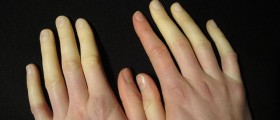Hypothermia is a medical condition in which the body’s mechanism which is in charge of regulating the temperature gets overwhelmed by a cold stressor. This medical condition can be classified by degrees and it can also be primary or secondary and intentional or accidental.
Accidental hypothermia occurs when a person is exposed to cold temperatures by accident, while intentional hypothermia is commonly induced as a means of neuroprotection in certain risky types of situations.
When there are no underlying medical conditions causing hypothermia and it is only induced by environmental exposure, it is then referred to as primary hypothermia. Secondary hypothermia is a medical condition which is associated with some other underlying medical condition which causes it. All cases of hypothermia require immediate medical attention and they need to be treated as soon as possible.

Pathophysiology
The normal body temperature is somewhere between 36.5 and 37.5 degrees Celsius, depending on the person. The stable core temperature of the human body is maintained by a constant process of balancing between heat loss and heat production. When the body is resting, it produces 40 to 60 kilocalories of heat per square meter of body surface, mostly triggered by cellular metabolism in the heart and the liver.
- Hypothermia takes place when the body dissipates more heat than it absorbs or creates, leaving the body unable to generate sufficient heat to maintain homeostasis and proper bodily function. While the underlying cause of accidental hypothermia is excessive cold stress and inadequate heat generation from the body (thermogenesis), other factors increase the risk of developing hypothermia. Functional central and peripheral nervous systems, along with proper behavioral adaptation, are important components.
- Each year there are approximately 700 to 1500 patients in the United States who have hypothermia noted on their death certificate. Adults between the ages of 30 to 49 are more likely affected, with men being ten times more likely than women. However, the true incidence of hypothermia is relatively unknown. Even with supportive in-hospital care, the mortality of those with moderate to severe hypothermia still approaches 50 percent.
- Hypothermia may also be due to drugs like general anesthetics, beta-blockers, meperidine, clonidine, neuroleptics, and alcohol.
- All patients with suspected hypothermia should have a complete history and physical exam to exclude local cold-induced injuries and assess for signs of trauma or other illness that may have caused their exposure to the cold. Also, be aware of vital signs inconsistent with the degree of hypothermia as this may be the only clue to an alternate diagnosis such as hypothyroidism, adrenal insufficiency, sepsis, hypoglycemia, carbon monoxide poisoning, alcohol abuse, malnutrition, unintentional/intentional overdose.
- The management and treatment of accidental hypothermia revolve around the prevention of further heat loss and the initiation of rewarming. However, the initial steps are always to evaluate and support airway, breathing, and circulation. Wet clothing should be removed and replaced with dry clothing or insulation as soon as possible to prevent further heat loss.
- Frostbite is a complication of hypothermia. It is a form of dry gangrene. When gangrene becomes infected, it becomes wet gangrene. Wet gangrene that has crepitus indicates a gas-producing organism. Clostridium perfringens classically cause superinfections with crepitus.
When the muscles get contracted, the production of heat gets increased by 2 to 5 times, once again, depending on the person. Radiation is responsible for the biggest part of heat loss in the human body. Other ways of heat loss include evaporation, respiration, convection and conduction. Accidental hypothermia is usually associated with convective or conductive heat loss, which are actually direct means of heat transferring.
The hypothalamus is in charge or thermoregulation in the human body. Hypothermia may affect all organs and system in the human body, but the ones which are usually the most affected are the CNS and the cardiovascular system.
Epidemiology of Hypothermia
It is almost impossible the estimate the incidence of hypothermia because not all cases of this dreadful medical condition end up in a hospital. Only the most severe cases can be encountered for at hospitals. Hypothermia is associated with various social problems such as homelessness, mental illness and alcoholism so it can be considered as a disease of urban areas.
The most common areas affected by hypothermia in the United States include Montana, North Dakota, New Mexico and Alaska. Hypothermia also frequently occurs in swimmers, rafters, boaters, climbers, skiers hunters and all others who like to spend time in the outdoors.

















Your thoughts on this
Loading...